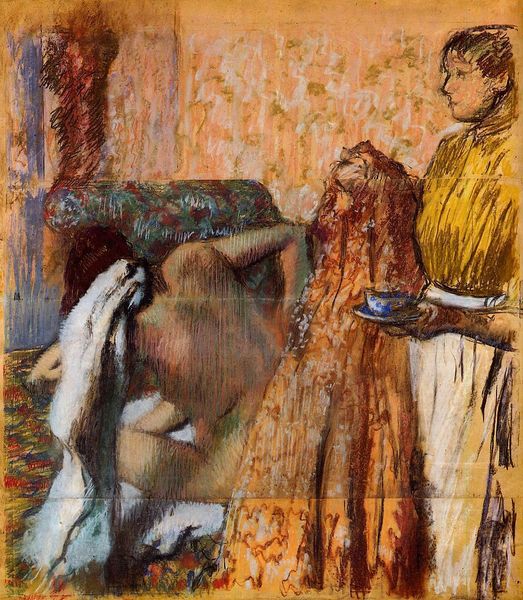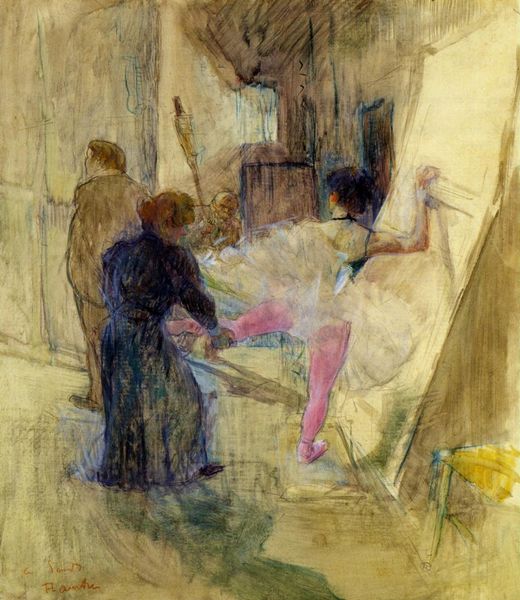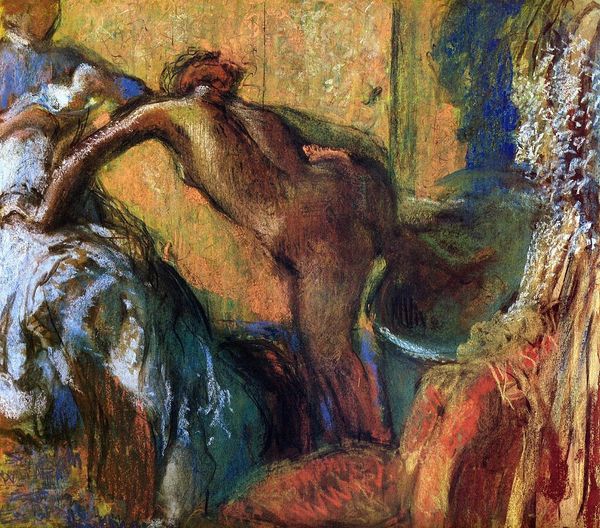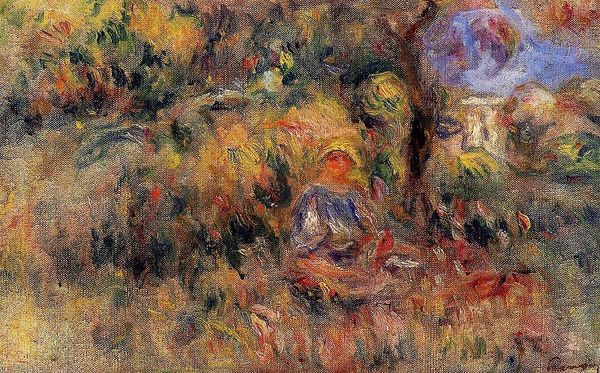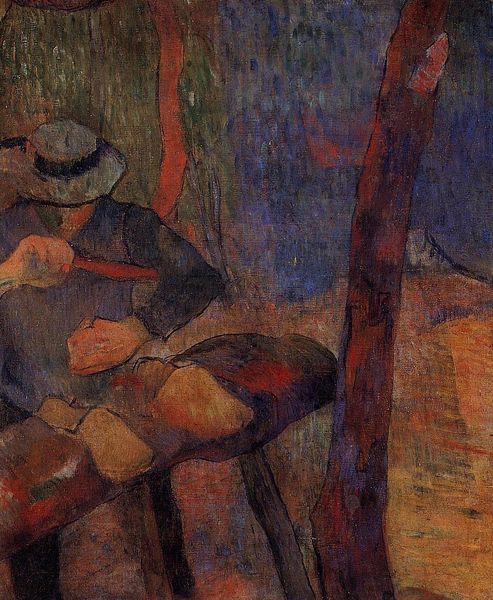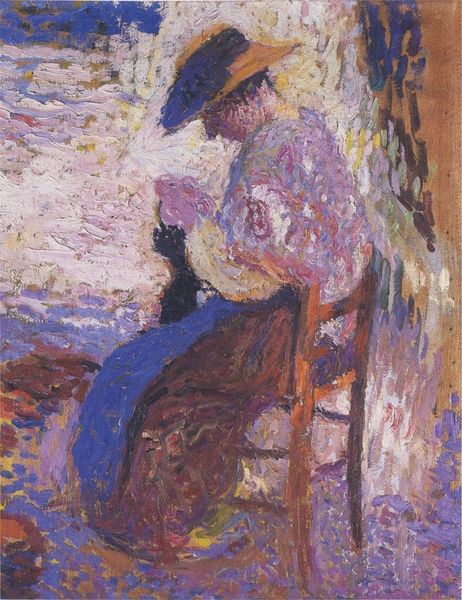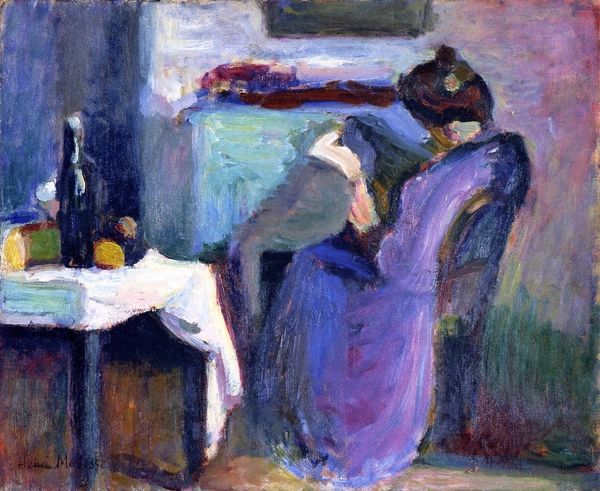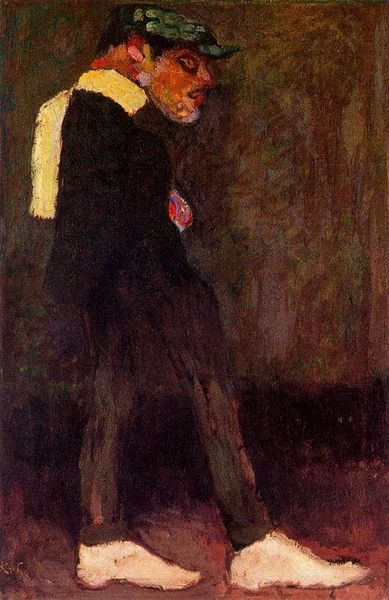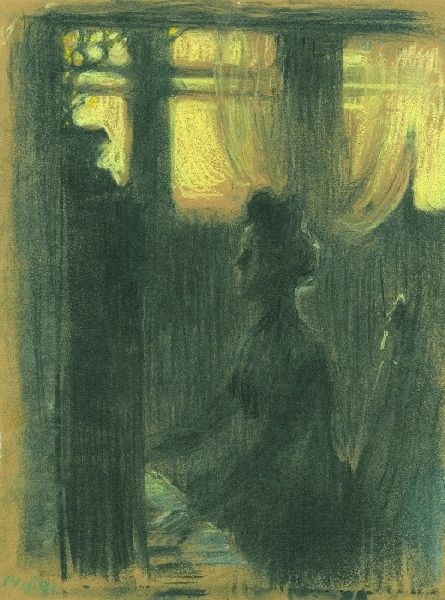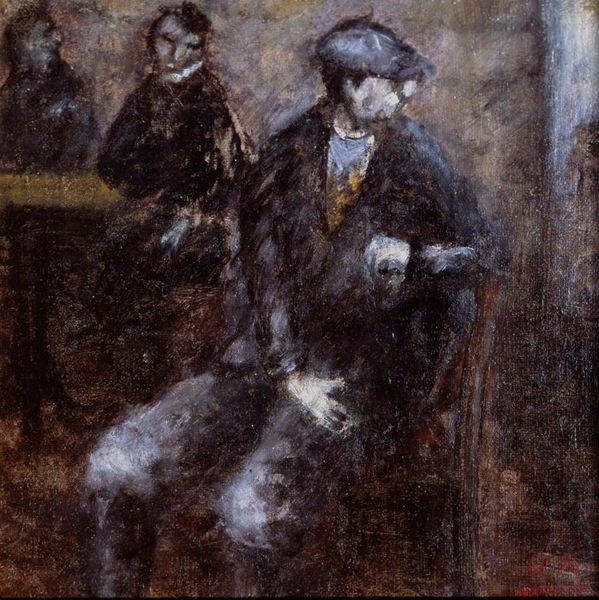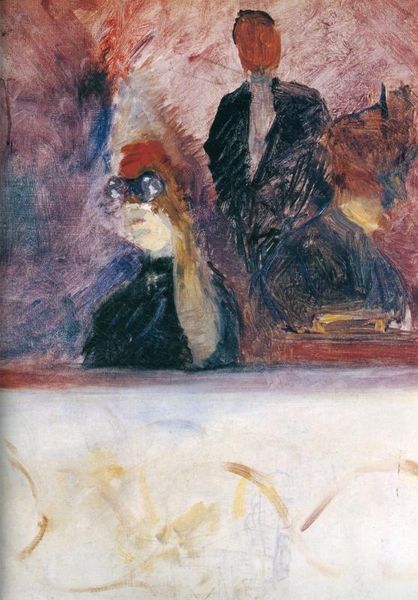
painting, oil-paint
#
conversation-piece
#
painting
#
impressionism
#
oil-paint
#
impressionist landscape
#
figuration
#
oil painting
#
genre-painting
Copyright: Public domain
Curator: Here we have Pierre-Auguste Renoir’s "By the Fireside," created in 1875. It’s an oil painting, currently residing here in the Staatsgalerie Stuttgart. My initial thought: cozy melancholy. A woman absorbed in a book by the fire, and a rather morose-looking man hovering nearby. It feels like a fleeting moment, beautifully captured. What catches your eye first? Editor: Definitely the facture – Renoir's handling of the oil paint. We see visible brushstrokes and the lack of sharp detail. This contributes to its character as a genre painting that departs radically from earlier Salon styles while simultaneously pointing to an emerging art market. Note that Impressionism arose alongside expanded paint production; here we see pre-mixed colors in tubes allowed for ease and quickness that facilitated his famed en plein air style—or paintings created outdoors. Curator: Precisely! I think that's essential to understanding how that fleetingness is even possible. To me, that blue dress the woman is wearing just sings – it practically shimmers. And, because we know his later works, and we consider Renoir, it really does feel almost revolutionary for this period of his life, as if he is setting a boundary for domestic bliss. Editor: It is significant that "By the Fireside," produced fairly early in Renoir's career, demonstrates both his Impressionist approach and growing appeal among a bourgeoisie seeking a representation of modernity itself. He wasn't just painting people; he was representing and responding to shifts in labour practices, leisure time, and even domestic consumption. Curator: Well put. I especially agree about consumption and it even echoes a more domestic sensibility. It also speaks to Renoir's evolving artistry. But that subdued tension! Do you think the mood would shift entirely if those two figures switched places? Editor: Undoubtedly. By decentering traditional, academic modes of art production, Impressionism made these mood shifts more relevant for its target consumers than questions around subject and hierarchy ever were. And by choosing "leisure" and genre paintings, the art making shifts that would democratize creative forms for mass art that have become part of our global cultures, a shared global language that defines so much popular material culture that would otherwise remain unseen. Curator: So interesting. It really changes how I see those blues, not merely reflective of dress, but social commentary about domestic life! Well, thinking about art as deeply entwined with industrial change offers an entirely new angle on something that initially struck me as merely intimate and personal. Editor: Absolutely. Every brushstroke tells a story, both on and off the canvas.
Comments
No comments
Be the first to comment and join the conversation on the ultimate creative platform.
